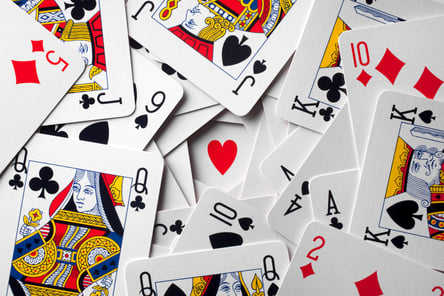 Did you know it is estimated that food loss and food waste account for more than 8 percent of total human-made greenhouse gas emissions, a leading driver of climate change? According to the US Department of Agriculture (USDA), it is estimated that 30–40 percent of the food supply (130 billion pounds of food) goes to waste each year. Additionally, the United Nations has claimed that if global food waste were able to represent its own country, it would be the third largest greenhouse gas emitter, following China and the US. Fortunately, you can help cut back on your personal food waste by reducing, reusing, and recycling your leftovers. Here’s how.
Did you know it is estimated that food loss and food waste account for more than 8 percent of total human-made greenhouse gas emissions, a leading driver of climate change? According to the US Department of Agriculture (USDA), it is estimated that 30–40 percent of the food supply (130 billion pounds of food) goes to waste each year. Additionally, the United Nations has claimed that if global food waste were able to represent its own country, it would be the third largest greenhouse gas emitter, following China and the US. Fortunately, you can help cut back on your personal food waste by reducing, reusing, and recycling your leftovers. Here’s how.
Reduce
Reduce your meat consumption. Animal agriculture is a leading cause of deforestation. Additionally, in the US, livestock and their waste are the largest contributor of methane, a greenhouse gas that has a significantly larger impact on our planet than carbon dioxide.
You can also reduce your consumption of “exotic” or hard-to-find fruits and vegetables and choose those that are locally grown or in season. Check out what fruits and vegetables are currently in season in the USDA Seasonal Produce Guide.
- You can also do things to reduce your food and food packaging waste.
- Plan a list for the grocery store to avoid purchasing more food than you need.
- Choose paper or cardboard packaging rather than plastic.
- Opt for items available in bulk and limit single-use containers and packaging.
- Purchase reusable sandwich or snack bags rather than single-use plastic bags.
- Learn how to properly freeze foods, rather than throwing away leftovers or unused foods.
Reuse
Reuse leftover food. You can find some tips and tricks for reusing leftovers at the Move for Hunger website.
Use plastic water bottles more than just once. Or purchase an aluminum reusable water bottle to eliminate your plastic waste while keeping your drink cool.
Reuse shopping bags as trash can liners, animal waste bags, or fillers for shoes/purses to help them maintain their shape. Or you can purchase reusable shopping bags for your grocery trips to significantly cut back on your plastic waste.
Recycle
Recycle your food waste by composting. Turn your leftover fruits, vegetables, coffee grounds, nutshells, newspaper, and more into soil for growing plants, perhaps even those that you can eat. Visit the US Environmental Protection Agency’s guide to Composting at Home.
Recycle paper and plastic products, when and where possible. If you’re not able to add something to the recycling bin, consider other ways you can utilize it.
This blog was written by Lindsey Recker, MS, RD, NIFS Registered Dietitian. To learn more about the NIFS bloggers, click here.


 Looking for a simple and fun way to plan your own workout? You can use a deck of playing cards to determine which exercises to do and how many reps. Here are the steps for planning this game-based workout.
Looking for a simple and fun way to plan your own workout? You can use a deck of playing cards to determine which exercises to do and how many reps. Here are the steps for planning this game-based workout. The “perfect” workout rarely happens. Every so often, you may have one of those training sessions where every block flows smoothly and programmed repetitions and sets are executed flawlessly. But for most days, there will be missed reps, you may feel more fatigued than you think you should, or the workout may not come together as you hoped it would. That is fine. Your goal should be to strive to be as close to perfect as possible, with the understanding that it may not always happen.
The “perfect” workout rarely happens. Every so often, you may have one of those training sessions where every block flows smoothly and programmed repetitions and sets are executed flawlessly. But for most days, there will be missed reps, you may feel more fatigued than you think you should, or the workout may not come together as you hoped it would. That is fine. Your goal should be to strive to be as close to perfect as possible, with the understanding that it may not always happen.